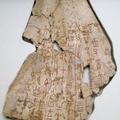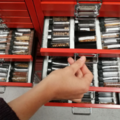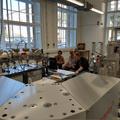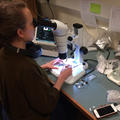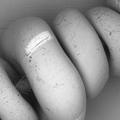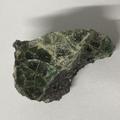MSc in Archaeological Science
Msc Archaeological Science - an overview
Scientific analysis of archaeological materials can help uncover networks of trade and exchange, reconstruct technological processes, and identify cultural choices and behaviours that are otherwise inaccessible to the archaeologist. This course will provide you with an understanding of the potential uses and limitations of these methods, with a strong focus on how they help address questions about the human past. The aim of the taught part of the course is to produce ‘informed customers’ for a range of scientific archaeological materials analysis, whilst the dissertation allows you to focus on a specific question, and gain some practical experience in relevant methods.
The course provides a detailed grounding in the theory and practical experience across all the major applications of science in archaeology. It is intended for those who wish to expand their knowledge and undertake research in archaeological science, or archaeologists who intend to pursue a career in the management of archaeological projects or become policy makers in this area and would like to have a sound understanding of the potential of science to elucidate archaeological problems.
The MSc degree also provides key training for doctoral research.
Applicants may have either an archaeological or science degree, and it is advantageous to have some knowledge of both subjects.
Archaeological Science Modules
The Masters in Archaeological Science is taught in three discrete modules, all of which are compulsory.

This course explores the use of scientific analysis of archaeological artefacts to elucidate questions of archaeological interest. We will cover a broad introduction to the study of materials, and specifically materials in archaeological science. We will discuss the fundamentals of material structure for each of the major classes of materials exploited by people across the past (metals, stone, ceramics, glass, organics), the how, where and why of the sourcing of raw materials, as well as the complexity and variation of production processes. Through this, we will also cover the major techniques used in the analysis of archaeological materials, and their strengths and weaknesses, and their usefulness for different kinds of materials and question. At the heart of this course will be the why of analysis, and what it can bring to archaeology.
This course is taught through lectures, seminars and tutorials, as well as practical laboratory teaching and experimental archaeology.
Coordinator: Prof Shadreck Chirikure
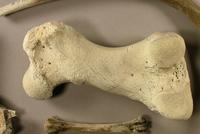
Scientific methods are playing an increasingly important role in archaeological research, and this is particularly true of organic materials. Developments in the analysis of stable isotopes, lipid residues, trace elements and ancient DNA are providing new lines of evidence for a host of central questions, including past subsistence and environmental change, migration and genetic origins. This course provides a detailed, critical overview of these topics, both in terms of the techniques themselves, and their archaeological applications. More traditional bioarchaeological analysis of human, faunal, and plant remains also feature.
The taught element of the course involves lectures and seminars that are complemented by interactive sessions involving the investigation of plant, animal and human remains as well as the generation and analysis of isotopic data. It makes use of the ongoing research of both members of staff and researchers to present the latest approaches.
Coordinator: Prof Greger Larson

We need to be able to put past events onto a timescale if we are to understand them properly. Scientific dating allows us to explore the relationship between different sites and regions. Furthermore, chronologies built up from dating and other evidence enable us to understand processes at work in the archaeological record. This course looks at the scientific dating methods most commonly applied, including the practical aspects of radiocarbon, luminescence, tephrochronology and dendrochronology. It also provides an introduction to the use of statistical methods for combination of information from direct dating and other archaeological information. There is a strong emphasis on the critical evaluation of dating evidence.
Coordinator: Dr Rachel Wood
Structure and Assessment
Teaching, focused in Michaelmas and Hilary Terms, involves a combination of lectures, discussion seminars and laboratory sessions requiring regular written work, class presentations and is supplemented by a range of graduate seminars.
Summative assessments take the form of:
- A lab report with associated blog post and museum label
- A 5,000 word review article on a chosen topic
- Three 2-hour exams (One exam per module)
- A short oral presentation of dissertation research progress
- A dissertation of 15,000 words (max) submitted in early September
The degree is a very intensive course, and you will be expected to treat the University vacations as integral parts of your academic work time.
Other information
Edward Hall Memorial Fund
All candidates offered a place on the MSc in Archaeological Science will be considered for a bursary from the Edward Hall Memorial Fund. These bursaries honour Edward Hall (1924-2001) who was instrumental in the development of archaeological science, and helped to establish the Research Laboratory for Archaeology and the History of Art in 1955.
We typically award between two and four bursaries each year of £4,000 to £10,000. To be eligible you need to apply to the MSc in Archaeological Science programme through the usual application system no later than the January application round. All applicants will be automatically considered for one of the bursaries and notified if they have been successful by the end of April. At this point an acceptance of the bursary is expected within a couple of weeks.
Bursaries will be awarded to the strongest applicants who demonstrate
- motivation for and understanding of the proposed area of study,
-
sound reasons for applying to the School of Archaeology and the MSc in Archaeological Science, and
-
evidence that your academic ability and focus are suited to the demands and nature of the degree.
Successful applicants are asked to inform the School of Archaeology of any other offers of financial support for the purpose of their studies at Oxford. Adjustments to the value of the bursary may be made to take account of these.
For more information about other funds, see the School of Archaeology Funding Page, and the University Graduate Funding pages.
- Developing the use of supercritical fluids for the characterising Andean colourants and pretreatment of dyed textiles for radiocarbon dating.
- An aDNA Analysis of Early "Domestic" Cats in Britain
- A Combined Approach of ZooMS Faunal Identification and Stable Isotope Analysis to the Diet and Chronology of Palaeolithic Hominins at Vindija cave, Croatia.
- A Framework for the Study of “Mercury Jars” and Other Stoneware from the Temasek Period of Singapore, alongside 12th-Century Stoneware from Kota Cina, Sumatra
- The influence of seasonality on radiocarbon dates: investigating an offset with the calibration curve during the medieval period in England.
- An investigation into climatic and Paleoenvironmental change across the Late Pleistocene to Early Holocene transition in Lesotho, Southern Africa, through the use of Stable Carbon and Oxygen isotopes.
- Divine Provenance: An investigation into the procurement of obsidian during the Late Bronze Age and Early Iron Age at the site of Mtsvane Gora, eastern Georgia.
- Exploring the potential use of the CERN Medipix 3 chip as a particle camera for dose rate measurements in luminescence dating
- Sedimentological and geochemical soil analysis of Lazaret Cave to determine post-depositional effects on organic molecule preservation
- Stable isotope analyses of oxygen-18 in bone collagen as a means of determining mobility during the Neolithic and Early Bronze Age at Baikal
- Molecular clocks and domestication, using rabbits as a model organism.
- Must the pot be destroyed? A comparison of approaches to organic residue extraction from ceramic fabrics
- Cities and Ceramics: Exploring pottery production processes in the Danelaw
- Distinction through Diet: Assessing the evidence for consumption at late Anglo-Saxon estate centres.
- Early farming in the NW Levant: Critically assess the plant remains assemblage from neolithic Ras Shamra (NW Syria).
- Discuss how recent developments in the identification of palm (Arecaceae) phytoliths can been applied to archaeological and palaeoecological problems
- Whatever happened to the steel age? Looking at the role of steel in the adoption of iron in the Levant
- Advancements in Radiocarbon Dating and Their Implications for Human Evolution
- Something Blue: Pigment Composition Analysis, History, and the Development of Pyrotechnologies in the Old and New World
- Genetic Factors in Understanding the Domestication of Millet across Eurasia
- Two Strands Are Not Better Than One: Exploring the Progression of Ancient DNA Sequencing Strategies
- The Devil is in the Details: aDNA analyses and chronological integration
- How has luminescence dating aided in our quest to find the origins of the Clovis culture, and how can new advances further this?
- How reliable is strontium isotope ratio analysis in investigating past human mobility in Mesoamerica?
- "The Development of Next Generation Sequencing Technologies and its Applications to the Understanding and Tracking of Ancient Pathogens"
- Animal to Script - Provenancing Medieval Manuscripts and New Methods for Retrieving Biological Data from Parchment
* continued or returned to do a doctoral degree in the School of Archaeology, Oxford
Bazgir, B., Ollé, A., Tumung, L., *Becerra-Valdivia, L., Douka, K., Higham, T., van der Made, J., Picin, A., Saladié, P., López-García, J., Blain, H., Allué, E., Fernández-García, M., Rey-Rodríguez, I., Arceredillo, D., Bahrololoumi, F., Azimi, M., Otte, M. and Carbonell, E. 2017. Understanding the emergence of modern humans and the disappearance of Neanderthals: Insights from Kaldar Cave (Khorramabad Valley, Western Iran). Scientific Reports 7: e43460.
*Becerra-Valdivia, L., Douka, K., Comeskey, D., Bazgir, B., Conard, N.J., Marean, C.W., Ollé, A., Otte, M., Tumung, L., Zeidi, M. and Higham, T.F.G. 2017. Chronometric investigations of the Middle to Upper Paleolithic transition in the Zagros Mountains using AMS radiocarbon dating and Bayesian age modelling. Journal of Human Evolution 109: 57-69.
Devièse, T., Karavanić, I., Comeskey, D., Kubiak, C., Korlević, P., Hajdinjak, M., Radović, S., Procopio, N., Buckley, M., Pääbo, S. and Higham, T. 2017. Direct dating of Neanderthal remains from the site of Vindija Cave and implications for the Middle to Upper Paleolithic transition. Proceedings of the National Academy of Sciences, doi: 10.1073/pnas.1709235114
*Matin, M. and Pollard, A.M. 2017. From ore to pigment: a description of the minerals and an experimental study of cobalt ore processing from the Kashan mine, Iran. Archaeometry 59(4): 731–746.
Schulting, R.J., *Vaiglova, P., Crozier, R. and Reimer, P.J. 2017. Further isotopic evidence for seaweed-eating sheep from Neolithic Orkney. Journal of Archaeological Science: Reports 11: 463–470.
*Brown, S., Higham, T.F.G., Slon, V., Pääbo, S., Meyer, M., Douka, K., Brock, F., Comeskey, D., Procopio, N., Shunkov, M., Derevianko, A. and Buckley, M. 2016. Identification of a new hominin bone from Denisova Cave, Siberia using collagen fingerprinting and mitochondrial DNA analysis. Scientific Reports 6: e23559.
*Hopkins, R., Snoeck, C. and Higham, T.F.G. 2016. When dental enamel is put to the acid test: pretreatment effects and radiocarbon dating. Radiocarbon 58(4): 893-904.
*Hood, A.G.E. and Schwenninger, J.-L. 2015. The minimum extraction technique: A new sampling methodology for optically stimulated luminescence dating of museum ceramics. Quaternary Geochronology 30: 381-385.
*Irving-Pease, E. K., Frantz, L. A. F., Sykes, N., Callou, C., & Larson, G. (2018). Rabbits and the Specious Origins of Domestication. Trends in Ecology & Evolution 33(3): 149–152.
*Liu, R., Bray, P.J., Pollard, A.M. and Hommel, P. 2015. Chemical analysis of ancient Chinese copper-based objects: Past, present and future. Archaeological Research in Asia 3: 1-8.
*Loftus, E., Stewart, B.A., Dewar, G. and Lee-Thorp, J.A. 2015. Stable isotope evidence of late MIS 3 to middle Holocene palaeoenvironments from Sehonghong Rockshelter, eastern Lesotho. Journal of Quaternary Science 39(8): 805–816.
*Matin, M. and Pollard, A.M. 2015. Historical accounts of cobalt ore processing from the Kashan mine, Iran. Iran: Journal of the British Institute of Persian Studies 53: 171-183.
*Roberts, P., Henshilwood, C.S., van Niekerk, K.L., Keene, P., Gledhill, A., Reynard, J., Badenhorst, S. and Lee-Thorp, J. 2016. Climate, environment and early human innovation: Stable isotope and faunal proxy evidence from archaeological sites (98-59ka) in the southern Cape, South Africa. PLoS ONE 11(7): e0157408.
*Santana-Sagredo, F., Lee-Thorp, J.A., Schulting, R.J. and Uribe, M. 2015. Isotopic evidence for divergent diets and mobility patterns in the Atacama Desert during the Late Intermediate Period (AD 900–1450). American Journal of Physical Anthropology 156(3): 374-387.
*Snoeck, C., Brock, F. and Schulting, R.J. 2014. Carbon exchanges between bone apatite and fuels during cremation: impact on radiocarbon dates. Radiocarbon 56(2): 591-602.
*Snoeck, C., Lee-Thorp, J.A. and Schulting, R.J. 2014. From bone to ash: compositional and structural studies of burned bone. Palaeogeography Palaeoclimatology Palaeoecology 416: 55-68.
*Vaiglova, P., Bogaard, A., Collins, M.J., Cavanagh, W., Mee, C., Renard, J., Lamb, A., Gardeisen, A. and Fraser, R.A. 2014. An integrated stable isotope study of plants and animals from Kouphovouno, southern Greece: a new look at Neolithic farming. Journal of Archaeological Science 42: 201-215.
*Wood, R.E., Higham, T., Buzilhova, A., Surorov, A., Heinemeier, J. and Olsen, J. 2013. Freshwater radiocarbon reservoir effects at the burial ground of Minino, northwest Russia. Radiocarbon 55(1): 163-177.





